Plant Trees Like a Pro: Essential Steps for Healthy Growth
- June 5, 2024
- 0 comment
Unlock the secrets to how to plant trees like a pro. Follow our essential steps for guaranteed healthy growth. Ready to green your space with vibrant, thriving trees?
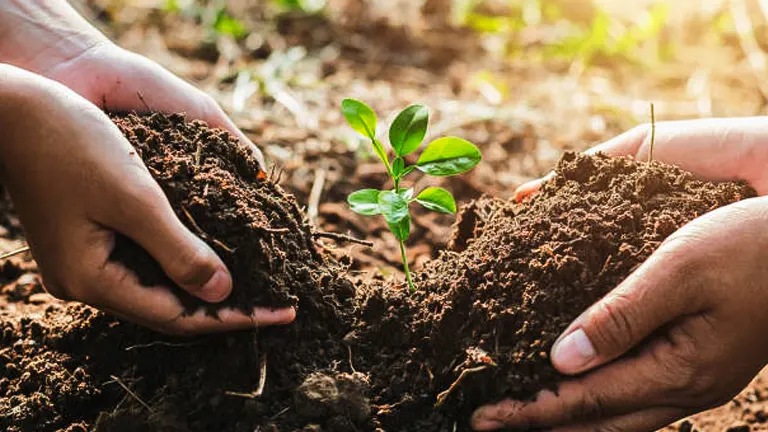
Whether you’re a beginner or a seasoned gardener, our expert guide will equip you with all the techniques you need to ensure your trees not only survive but flourish. Dive into our essential steps and transform your landscape today.
Table of Contents
- Understanding the Basics
- Choosing the Right Tree
- Pre-Planting Preparation
- Step-by-Step Planting Process
- Staking and Supporting
- Post-Planting Care
- Common Pitfalls and How to Avoid Them
- Pruning and Maintenance
- Conclusion
- FAQs
Understanding the Basics
Definitions of Key Terms:
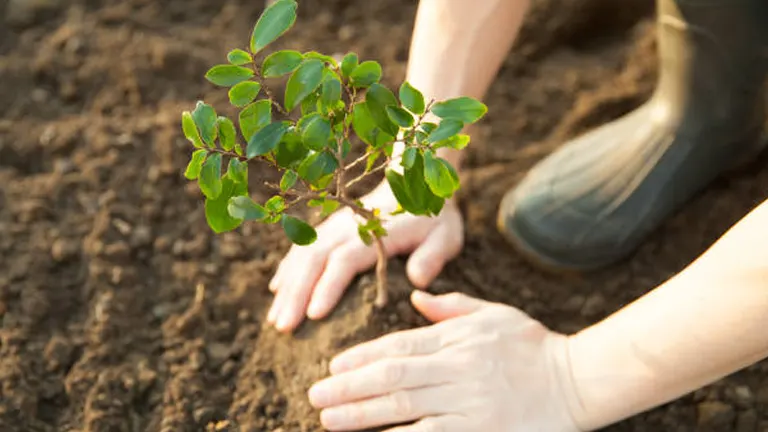
Bare-root Trees: These trees are sold with their roots exposed, not contained in soil, which reduces their weight and cost associated with transport. This method is particularly beneficial for deciduous trees during their dormant seasons, as it minimizes transplantation shock.
Balled-and-burlapped Trees (B&B): This traditional method involves trees being dug from the ground with their root balls intact, then wrapped in burlap to hold the roots and their attached soil. It’s crucial for evergreen trees or large specimens, providing a stable environment that enhances root and transplant success.
Container-grown Trees: Trees cultivated in containers offer the advantage of year-round planting options. The roots develop within the confines of the container, reducing the risk of transplant shock. However, it’s vital to ensure that these trees have not become root-bound, which can stifle growth and lead to structural instability.
Ecological and Environmental Benefits of Trees:
Trees are cornerstones of the ecological infrastructure, providing numerous environmental benefits critical for life. Here are detailed insights into their roles:
- Carbon Sequestration: Trees absorb CO2, the primary greenhouse gas, from the atmosphere during photosynthesis, storing carbon and releasing oxygen. On average, a mature tree can absorb roughly 48 pounds of CO2 annually, equating to nearly 1 ton of carbon in 40 years.
- Temperature Control: Through the process of evapotranspiration, trees release water vapor into the air, which can reduce peak summer temperatures by 2-9°F. Urban areas especially benefit from tree canopies that mitigate the heat island effect.
- Water Conservation and Quality: Trees improve water quality by slowing and filtering rainwater and protecting aquifers and watersheds. The root systems of trees increase soil permeability, reducing runoff and erosion, and preventing pollutants from entering water bodies.
- Biodiversity Support: Trees are vital habitats for many species, providing nesting sites, food, and protection. A single mature oak tree can support over 280 different species, underscoring the role of trees in maintaining ecological diversity.
Summary Table of Tree Benefits:
| Benefit | Description | Impact/Numbers |
|---|---|---|
| Carbon Sequestration | Absorbs CO2 from the atmosphere. | 48 lbs/year/tree, 1 ton/40 years |
| Temperature Control | Moderates local temperatures through shading and evapotranspiration. | Reduces temperatures by 2-9°F |
| Water Conservation | Increases soil permeability, reduces runoff. | Enhances groundwater recharge |
| Biodiversity Support | Provides habitat and food for wildlife. | Supports over 280 species per mature oak |
Choosing the Right Tree
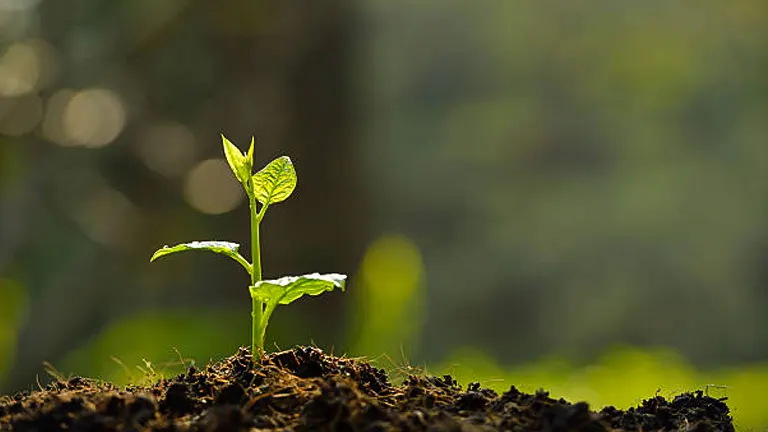
Selecting the right tree for your landscape involves a detailed understanding of the environmental conditions and the functional goals you wish to achieve. Here are refined criteria and scientific insights to consider:
- Climate Zone: Trees have specific climatic requirements including temperature tolerance and seasonal adaptability. Utilize the USDA Hardiness Zone map or similar resources in your region to select species that can thrive in your local weather conditions. For example, a tree like the Sitka Spruce is best suited for cooler northern climates (Zones 7-8), while the Ponderosa Pine thrives in Zones 3-7.
- Soil Type: Soil composition affects a tree’s ability to absorb water and nutrients. Species such as the Eastern Red Cedar are adaptable to a variety of soils, including clay, making them robust choices for less-than-ideal soil conditions. Conversely, the White Pine prefers well-drained, sandy soils. Conducting a soil test can reveal pH levels and nutrient content, guiding your selection towards trees that match the soil’s profile.
- Available Space: Consider both the above-ground and below-ground space. Trees like the American Elm require ample space due to their extensive root systems and large canopy spread. Planting a large tree in a confined space can lead to root competition and structural damage over time. Understanding the mature height and spread of the tree will prevent issues related to overcrowding and ensure proper growth and development.
- Desired Function: Define what you expect from the tree: Is it to provide shade, privacy, fruit, or purely ornamental value? Species such as the Honeycrisp Apple are ideal for fruit due to their high yield and disease resistance, whereas the Quaking Aspen is excellent for quick-growing shade and aesthetic appeal.
- Selecting Healthy Trees: At a nursery, examine trees for signs of robust health. This includes vibrant, green leaves, a strong, central leading branch, and a root system that is moist but not pot-bound. Avoid trees showing signs of distress such as cracked bark, spots on leaves, or a lopsided structure. Trees should be free from mechanical injuries and diseases, as these can affect their long-term vitality.
| Tree Species | Climate Zone | Soil Preference | Mature Size | Primary Function | Average Lifespan |
|---|---|---|---|---|---|
| Maple | 3-9 | Well-drained | Large | Shade, Aesthetic | 100+ years |
| Oak | 3-10 | Loamy | Very Large | Shade, Longevity | 200+ years |
| Dogwood | 5-9 | Acidic, Well-drained | Small | Aesthetic, Understory | 25 years |
| Apple | 4-8 | Loamy, Well-drained | Medium | Fruit Production | 50 years |
| Pine | 3-9 | Sandy, Acidic | Large | Windbreak, Privacy | 100+ years |
Pre-Planting Preparation
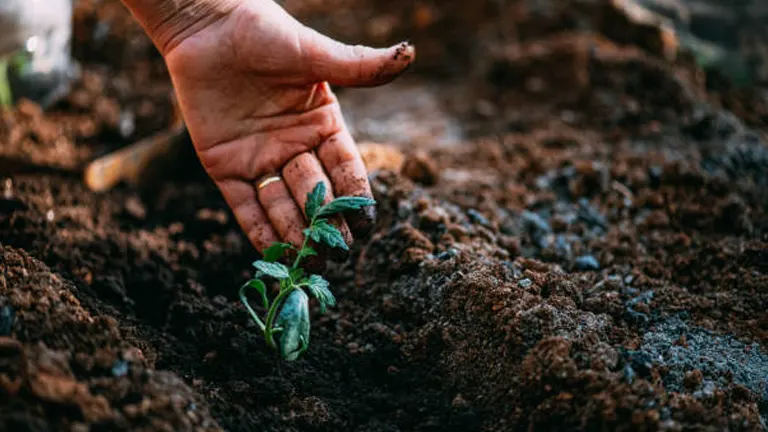
Proper preparation of the planting site is crucial for the successful establishment and growth of new trees. This preparation involves a thorough assessment of the location, detailed soil analysis, and gathering of essential planting tools and materials.
Assessing the Planting Site
- Sunlight: The amount of daily sunlight the site receives is critical. Most trees require full sun (at least six hours of direct sunlight daily), though some species, such as dogwoods and certain maples, thrive in partial shade.
- Drainage: Proper drainage is essential to prevent root diseases. Conduct a percolation test by digging a hole one foot deep and filling it with water. The time it takes for the water to drain will indicate if the site has poor, moderate, or excellent drainage.
- Space from Structures: Trees should be planted far enough from buildings and other structures to accommodate their mature width and to prevent root interference with foundations. A general rule is to plant the tree at a distance equal to at least half its expected mature canopy spread from any structures.
- Underground Utilities: Always check for underground utilities by calling the local utility marking service before digging. This prevents costly and dangerous mistakes.
Soil Testing and Amendments
- Soil Test: A comprehensive soil test will reveal pH, nutrient levels (nitrogen, phosphorus, potassium), and organic matter content. This data is essential for matching tree species with the site and for determining what soil amendments are needed.
- Amendments: Based on the soil test results, amendments may be necessary to create optimal growing conditions. For acidic soils, lime can be added to raise the pH, while sulfur may be used to lower the pH of alkaline soils. Organic matter, such as compost, can improve soil structure, enhance moisture retention, and provide essential nutrients.
Tools and Materials Needed
Preparation involves not only gathering the right tools but also understanding their use:
- Shovel: For digging the planting hole.
- Gardening Gloves: To protect hands during work.
- Water Source: Ensuring easy access to water for initial and ongoing watering needs.
- Mulch: Organic mulch, such as wood chips or bark, to help retain soil moisture and regulate temperature.
- Soil Amendments: As determined by the soil test results.
Summary Table of Optimal Soil Parameters for Tree Health:
| Parameter | Optimal Range | Importance |
|---|---|---|
| pH | 6.0 – 7.5 | Affects nutrient availability and root health |
| Organic Matter | 5% – 10% | Improves soil structure and nutrient availability |
| Nitrogen (N) | 20 – 30 ppm | Essential for leaf growth and photosynthesis |
| Phosphorus (P) | 30 – 50 ppm | Crucial for energy transfer and root development |
| Potassium (K) | 100 – 150 ppm | Important for disease resistance and water regulation |
Step-by-Step Process on How to Plant Trees Like a Pro
1. Digging the Hole: The dimensions of the planting hole are pivotal for the successful establishment of a tree. The hole should be twice as wide as the root ball to allow the roots to spread without resistance. The depth should be no deeper than the root ball’s height to prevent the tree from settling too low, which can cause water to pool and rot the base of the trunk. As you dig, place the excavated soil on a tarp nearby; this soil will be ideal for backfilling as it is already matched to the tree’s new environment.
2. Handling the Tree: Gently remove the tree from its container, being mindful not to disturb the root integrity. For balled-and-burlapped trees, carefully cut away the burlap and any wire cages, ensuring not to sever thick roots in the process. Loosen the outer roots to encourage them to grow outward rather than continuing to circle. If the roots are densely packed or girdling, use clean pruning shears to make vertical cuts. This encourages them to branch out into the surrounding soil, facilitating better stability and nutrient uptake.
3. Correct Placement of the Tree: Position the tree so that it is centered and upright in the hole. The top of the root ball should be level with or slightly above the surrounding soil surface to accommodate natural settling. This positioning also ensures that the base of the trunk is not buried, preventing moisture accumulation and potential rot.
4. Backfilling: Begin filling the hole with the soil that was originally removed, which helps the tree adjust to its new environment without the shock of different soil textures or nutrient levels. Compact the soil gently as you fill to eliminate air pockets that can dry out roots and destabilize the tree. Halfway through backfilling, water the soil to help settle it around the roots and then continue filling until the ground level is even.
5. Watering: Water the tree deeply immediately after planting to help establish it. This initial watering settles the soil around the roots and ensures that they have adequate moisture to begin adapting to their new location. Establish a regular watering schedule based on the current weather conditions and soil type—typically once a week unless there are extreme conditions. Ensure that the soil drains well and adjust watering to prevent saturation, as overwatering is as detrimental as underwatering.
Staking and Supporting
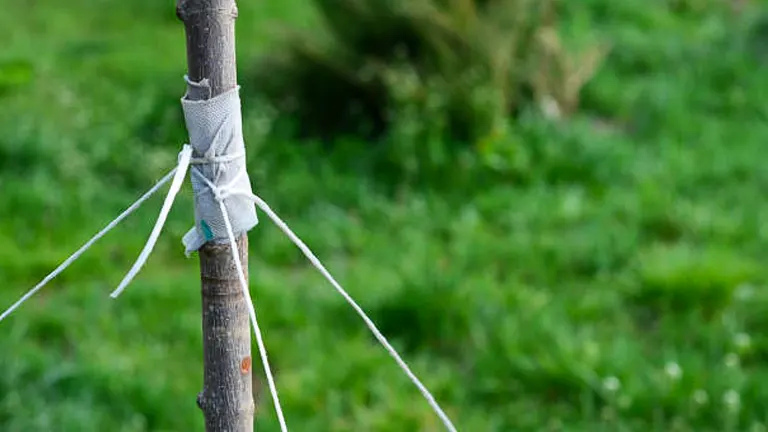
When and How to Stake Trees: Staking is typically employed to ensure stability of newly planted trees until their roots can adequately anchor them. However, it should be approached with caution as improper staking can hinder a tree’s natural growth and development.
- Criteria for Staking: Staking is generally recommended for trees planted in high-wind areas, on slopes, or those with disproportionately large canopies compared to their root ball size. It’s also advisable for trees that have a thin trunk that struggles to remain upright on its own.
- Proper Staking Technique: To stake a tree effectively, use two stakes placed on opposite sides of the tree, outside the root ball area. The stakes should be as tall as the lower third of the tree’s trunk to provide support without restricting upper trunk movement. Use soft, wide ties to secure the tree to the stakes, allowing some movement as this helps stimulate trunk strengthening. The ties should be checked and adjusted regularly to prevent damage to the growing bark and removed after one growing season or once the tree is stable.
Alternatives to Staking: In many cases, allowing a tree to grow without staking can promote a healthier and more structurally sound specimen. The natural swaying of the tree in response to wind stimulates the development of a stronger trunk and root system.
- Benefits of Non-Staking: Research shows that non-staked trees develop a wider trunk and a more extensive root system, which contribute to their long-term stability and health. Trees that withstand normal winds without support often have improved stress response mechanisms, making them more resilient to environmental pressures.
- Considerations for Non-Staking: Before deciding against staking, ensure that the tree’s planting location is sheltered from extreme winds, and the species planted is known for its structural integrity during the juvenile stages. Young trees in very exposed sites might still benefit from temporary support.
Post-Planting Care
Watering: Establishing a consistent and appropriate watering schedule is paramount for newly planted trees. During the first few weeks, water the tree deeply and regularly to help the roots establish. Adjust the frequency based on weather conditions—more frequent watering during dry spells and less during rainy periods. Use a slow-release method, such as a drip system, to ensure deep water penetration and encourage roots to grow downward.
Mulching: Apply a 2-3 inch layer of organic mulch around the base of the tree, extending out to the drip line. Mulch helps retain soil moisture, regulate soil temperature, and reduce weed competition. Avoid placing mulch directly against the tree trunk to prevent moisture buildup and potential rot.
Fertilization: Newly planted trees should not be fertilized immediately as it can harm delicate roots. Wait until the next growing season to apply a balanced, slow-release fertilizer that promotes healthy growth without forcing rapid sprouting. Ensure that the fertilizer is applied according to the soil’s nutrient needs, as determined by a soil test.
Common Pitfalls and How to Avoid Them
Overwatering and Underwatering: Recognizing the signs of overwatering (soggy soil, yellowing leaves) and underwatering (dry, brittle leaves) is crucial. Both conditions stress the tree and can lead to health problems or death. Use a soil probe or dig a small test hole to assess soil moisture at root level, ensuring conditions are optimal for root health.
Disease and Pest Management: Regularly inspect your tree for signs of pests or diseases. Early detection is key to managing potential outbreaks. Look for discolored leaves, unusual leaf drop, or visible pests. Consult with a local extension office or a professional arborist to identify and treat any issues specific to your region and tree species.
Landscaping Practices: Avoid physical damage from lawn equipment or vehicles which can wound the tree’s bark and open the door to infections or pests. Maintain a clear space around the tree’s trunk and ensure that any landscaping activities do not compromise the tree’s health.
Pruning and Maintenance
Pruning Young Trees: Prune during the dormant season to shape the tree and promote healthy growth. Remove only the necessary branches—typically those that are dead, damaged, or crossing. Aim to enhance the tree’s natural form, not to overly thin the canopy which can stress the tree.
Monitoring Tree Growth and Health: Regular monitoring helps track the tree’s adaptation to its new environment. Look for vigorous growth, which is a good indicator of a healthy tree. Make adjustments to care practices based on the tree’s performance and growth patterns.
Seasonal Care Recommendations: Understand the specific needs of your tree during different seasons. For example, increase watering during hot summers and protect younger trees from frost in winter. Seasonal adjustments to care are critical to the long-term success of your tree.
Related Post
- How to Build a Barn: A Step-by-Step Guide for Beginners
- How to Build a Sustainable Compost Bin: Easy and Eco-Friendly DIY
- How to Fertilize Bougainvillea: A Complete Guide for Stunning Blooms
- How to Fertilize Apple Trees: Essential Tips for a Bountiful Harvest
- How to Fertilize Lemon Trees: Secrets for Thriving Citrus
- How to Fertilize Avocado Tree: A Step-by-Step Guide for Lush Growth
- 10 Best Bow Saws to Buy in 2024: Top Picks for the Money
- Best Miter Saw For Beginners
- Top 10 Pruning Saws to Buy in 2024: Best for the Money
- 7 Best Pocket Chainsaw
Conclusion
Planting a tree is a profound act of hope and an investment in the future. By applying the techniques outlined in this guide, you can significantly influence the health and longevity of your trees. Whether you are a homeowner looking to beautify your yard or a community member working on a green initiative, the right approach to tree planting can yield incredible results. Correctly planting trees goes beyond individual benefits. It contributes to broader environmental goals such as air purification, carbon sequestration, and biodiversity preservation. Each tree planted today is a step towards a healthier, greener planet.
FAQs
- What is the best time of year to plant trees?
The ideal time to plant trees depends largely on your climate zone and the type of tree. In general, the best times are during the dormant seasons, either early spring before bud break or in the fall after leaf drop. This timing allows the tree to establish roots in conditions that are not too extreme. - How do I choose the right tree for my garden or landscape?
When selecting a tree, consider the tree’s mature size, its purpose (e.g., shade, fruit, aesthetic), the soil type, and the climate conditions of your area. Visit local nurseries to find species that are well-adapted to your local environment and consult with experts if needed. - How deep and wide should the hole be when planting a tree?
The hole should be as deep as the root ball but twice as wide. This allows ample space for the roots to expand easily into the surrounding soil and promotes better root development and stability. - Can I use mulch when planting trees, and if so, how?
Yes, mulching is highly beneficial for new trees. Apply a 2-3 inch layer of organic mulch around the base of the tree, extending out to the drip line. Be sure to leave some space around the trunk to prevent moisture retention and potential rot. - What are the signs of improper tree planting?
Signs of improper planting include stunted growth, yellowing of leaves, unusually rapid leaf drop, and visible girdling roots above the soil surface. These issues can arise from planting the tree too deeply, poor site and soil preparation, or inadequate watering. - How often should newly planted trees be watered?
Newly planted trees need consistent watering to establish their roots. Water deeply once a week, adjusting based on weather conditions—more frequently during hot, dry periods, and less during rainy weather. Use a slow-release watering method like drip irrigation to promote deep root growth. - What should I do if my newly planted tree starts leaning?
If a tree begins to lean shortly after planting, it may need staking. Place stakes on opposite sides of the tree and use soft ties to support the tree without damaging the trunk. Monitor the tree regularly and adjust the ties as needed to ensure they’re not too tight. - How can I tell if a tree is not suitable for my planting site after I’ve already planted it?
If a tree consistently shows signs of stress like wilting, discoloration, or limited growth despite proper care, it might not be suitable for your site. Factors such as incorrect soil type, insufficient space for growth, or inappropriate climate conditions could be the cause. Consulting with a local arborist can provide insights and potential solutions, which might include relocating the tree or altering your care approach.
By following these essential steps, you are well on your way to planting trees that will thrive and beautify your surroundings for years to come. Remember, each tree planted today not only enhances your immediate environment but also contributes to a greener, healthier future for everyone. Happy planting!
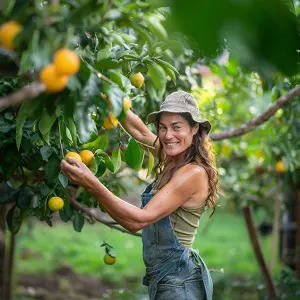
Emma Hudson
Forestry AuthorEmma's experience in farming shapes her detailed guides on gardening and farming tools, providing practical, actionable advice grounded in real-world experience. Her work targets both newcomers and experienced farmers, aiming to enhance their practices with a mix of traditional wisdom and modern techniques. By making complex agricultural concepts accessible, Emma's guides serve as valuable tools for those navigating the challenges of contemporary farming, offering strategies for sustainable success.



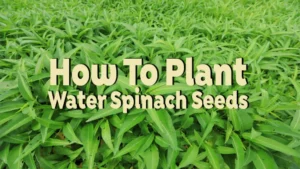


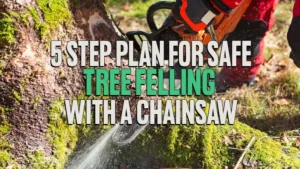


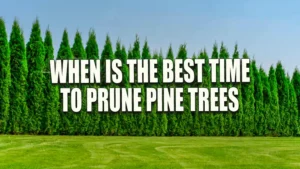


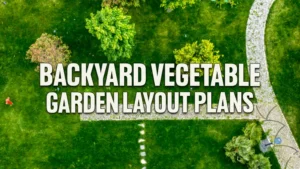
Leave your comment